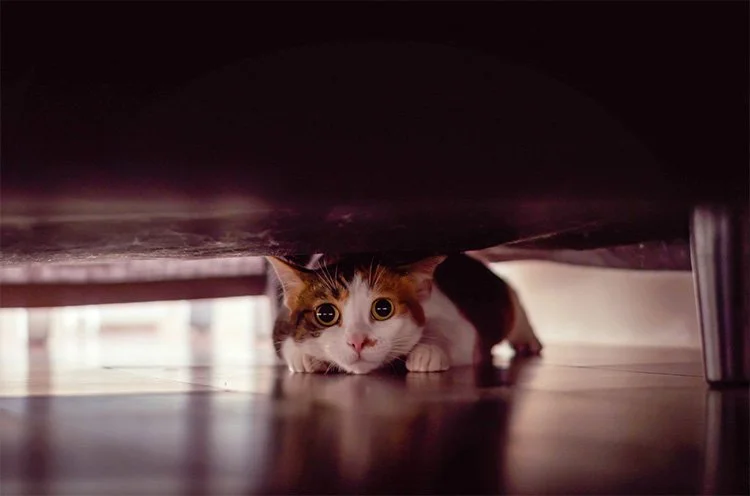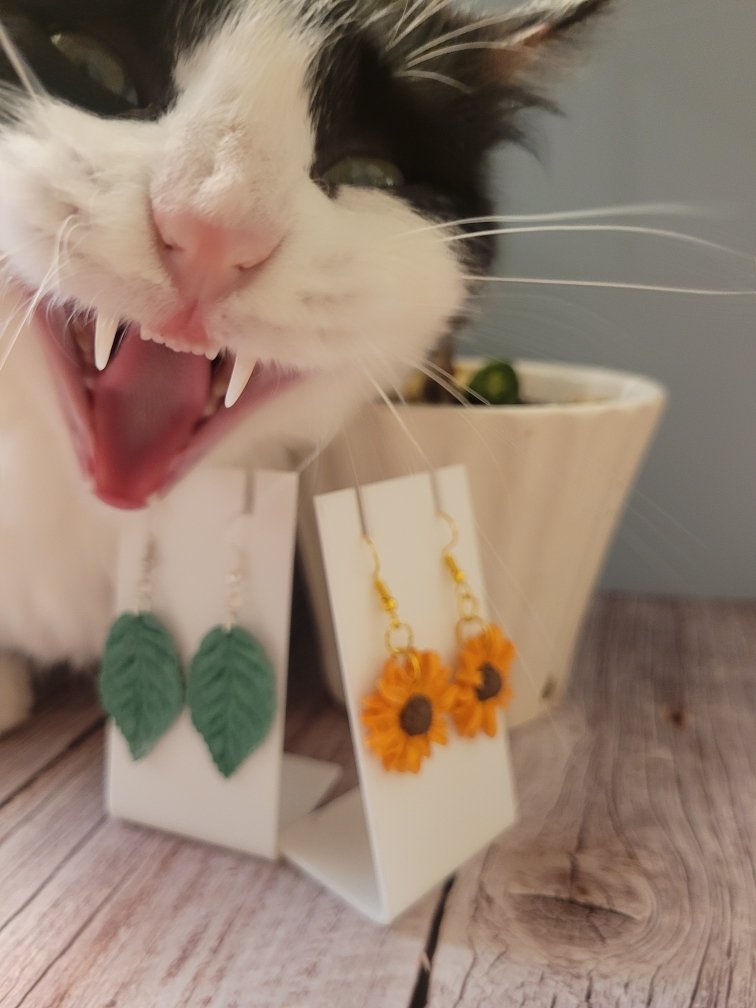Lessons from Pets: Exploring the Nervous System and Our Body’s Stress Response 🐕 🐈
Lentil The Cat, Unofficial Mascot of Raisin Joy OT
My friends all arrived at my home at once, ready for an afternoon of playing games and eating takeout. We all gathered around the living room, but I noticed the most outgoing member of the group was missing. “Lentil!” I called out, “pspsps.”
Two glowing eyes peered out from the shadows, deep beneath the couch. Lentil’s body was frozen, and her eyes glared back at me. This was nothing like the cuddly cat I know and love!... the one who sits proudly on my keyboard, purrs and headbutts me while I’m trying to work.
I thought back to the last time I’d seen her like this: at the vet’s office. That time, Lentil hissed, scratched, and even refused her beloved treats.
Since I adopted Lentil 2 years ago, I’ve also been on my own personal and professional journey, learning more about the body’s natural stress response and how to use this knowledge to support myself and clients in my OT sessions.
My OT kiddos love seeing pictures of Lentil and hearing about her latest mischief. Over time, I’ve realized she’s also the perfect teaching tool for understanding how our bodies respond to stress.
Let’s take a look at Lentil’s different states, and see what they can teach us about our own nervous system in action:
Lentil’s friend hiding under the couch. Her sympathetic nervous system is activated.
Dash Under The Couch (aka Flight Response / Sympathetic Activation)
🐾 What it looks like in Lentil:
This is Lentil when my home gets too crowded and loud. She runs and hides under the couch until she feels safe again.
🧠 Nervous system lense:
This is often referred to as a flight response, and it’s driven by activation of the sympathetic nervous system to keep us safe and far from danger.
👩🏻 What it looks like in me:
When my nervous system is activated in this way, I feel jittery. My heart is fluttery… I may think, “I gotta get out of here!” For some people, elopement can happen in this stage.
Lentil ready to protect herself!
Scratch, Hiss, & Bite (aka Fight Response / Sympathetic Activation)
🐾 What it looks like in Lentil:
This is Lentil at the vet. She feels scared and unsafe. Her claws are out! She may hiss, scratch, or even bite to defend herself. Totally not typical for this sweet little kitty.
🧠 Nervous system POV:
This is frequently called a fight response, and it’s also driven by activation of the sympathetic nervous system.
👩🏻 What it looks like in me:
My face feels hot, my muscles and jaw tense, my heart races. I may say something snappy, rude, and out of character. (I try to remind myself that my “thinking brain” is turned off when my sympathetic nervous system is activated. My brain and body is primed to protect myself and keep me safe. I’m still a good person, just like Lentil is still a sweet cat when she feels scared.)
Cat Statue Mode (aka Freeze Response / Sympathetic Activation)
“Cat in the headlights.” Lentil’s sympathetic nervous system is activated and ready to keep her safe.
🐾 What it looks like in Lentil: Her eyes are huge and staring, body is frozen. “Deer in the headlights” (Cat in the headlights?) If Lentil was in the wild, this would make her less noticeable to predators and prepare her body to run away or attack.
🧠 Nervous system lens: This is sometimes called the “freeze” response. It can happen when fight or flight isn’t effective at keeping the body safe. While fight/flight is sympathetic, this state involves a parasympathetic “immobilization” response, sometimes called a dorsal vagal shutdown or “putting on the breaks.”
👩🏻 What it looks like in me: I can feel my body freeze and making a decision feels impossible. Sometimes I feel “stuck” or like I’m “blanking out.” Some people may dissociate this state.
Heart Eyes 😻 (aka Fawn Response)
🐾 What it looks like in Lentil: I haven’t observed this type of activation in Lentil (Can pets fawn? I’m not actually sure…) But I imagine she would be extra cuddly and sweet in this state- soft eyes, gentle nudges, tiny meows- seeking connection when her body senses a potential threat.
🧠 Nervous system POV: In this state, the nervous system is protecting the body from a danger by connecting with others, socially engaging and appeasing. It includes suppressing one’s own needs to stay safe, and being hyper-aware of others’ emotions. It has some aspects of both the parasympathetic and sympathetic nervous system, but more research is needed to support this.
👩🏻 What it looks like in me:
People pleasers unite! When I am “fawning,” I’m more likely to say “yes” and let my boundaries slide. I may smile, nod, and be extra polite, even when I’m unhappy. In kids, this can seem like “compliance” and “good behavior” on the outside, when their nervous system feels unsafe on the inside.
Lentil feeling safe and cozy. Ventral Vagal ☺️
Livin’ Her Best Cat Life (aka Rest and Connect / Ventral Vagal/ Parasympathetic Activation)
🐾 What it looks like in Lentil: Lentil feels safe. She lounges in sunlight, bats at toys, or knocks over a plant just because she can.
🧠 Nervous system POV: The nervous system is sensing safety and the parasympathetic nervous system is activated. This involves the ventral branch of the vagus nerve.
👩🏻 What it looks like in me: When I’m in this state, I feel authentically “me”: curious, creative, and fully present. I’m able to connect with others and learn new things. My muscles feel relaxed and my heart rate/ breathing is normal. I’m not always in this state, and I know that’s normal. I will return to “rest and connect mode” again.
Paws for Thought…
Observing a family pet can provide a safe, playful way to learn about different nervous system states without putting the spotlight solely on the child. It can help them recognize their own fight, flight, freeze, fawn, and connection responses, practice regulation, and build self-awareness. In OT, these playful observations become a bridge to understanding the nervous system and learning strategies. And it’s the purrrfect excuse to spend a little extra time with a furry friend ❤️
Written by Nicole Raisin, OTR/L and Proud Cat Guardian





